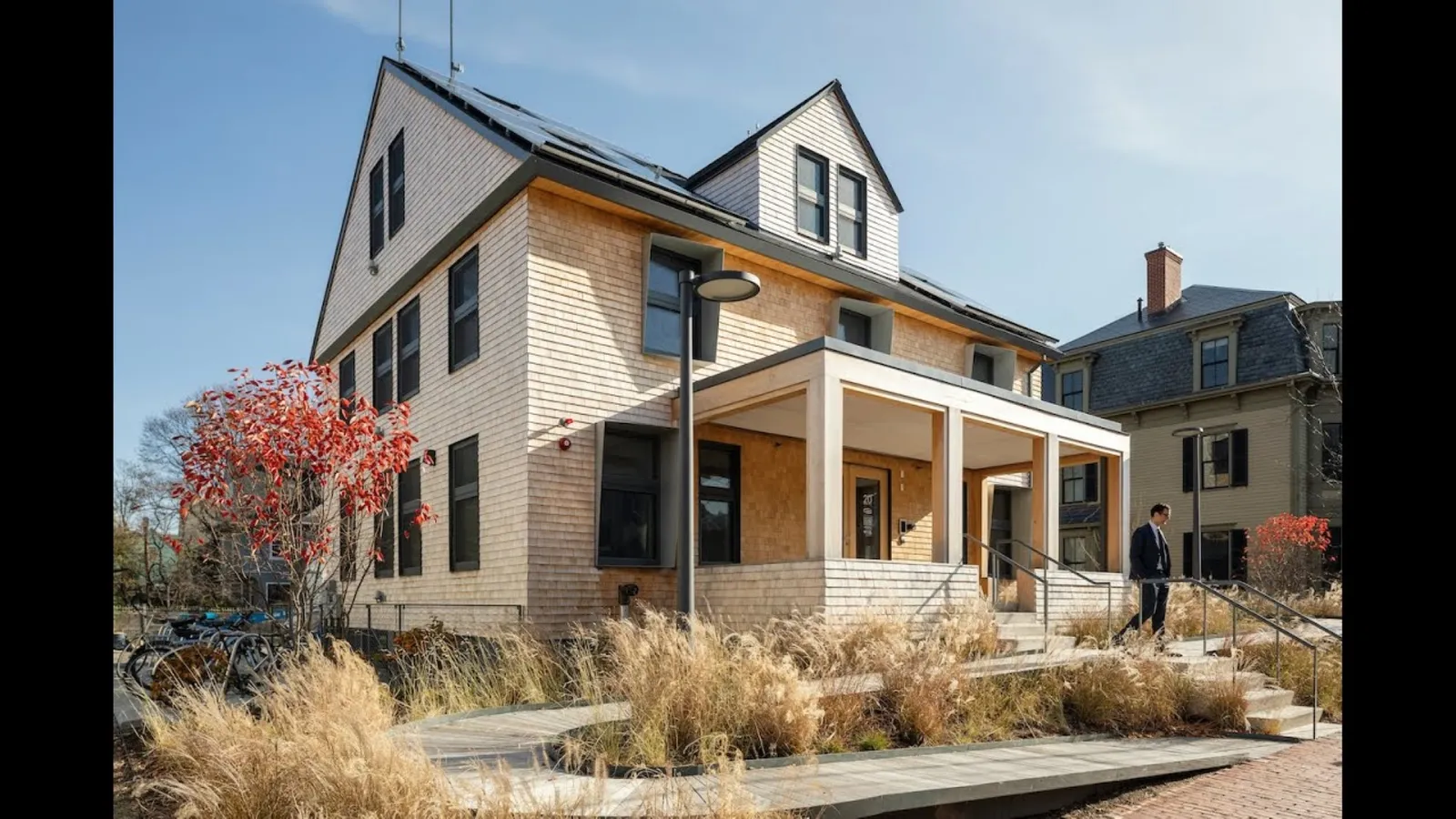Building retrofit data sheds light on energy efficiency: Harvard study – Utility Dive

Retrofitting Buildings with Low-Energy and Passive Technologies
Dive Brief:
- Retrofitting buildings with low-energy and passive technologies can help the building sector achieve carbon neutrality, according to a research paper authored by eight researchers from Harvard University. Their study presents a two-year dataset on an ultra-low energy office building retrofitted from a pre-1940s house.
- The 356-square-meter building, known as HouseZero, features systems like automated natural ventilation, a ground-source heat pump, and activated building systems, per the paper published in Scientific Data on Aug. 28. The building’s annual energy consumption dropped 5.7% from 38.5 kWh/square meter in the first year to 36.3 kWh/square meter in the second year.
- With this high-fidelity dataset, users can enhance their understanding of how such integrated low-energy and passive building technologies operate in a real building and develop advanced methods and algorithms to improve the design and operation of these systems, the study suggests.
Dive Insight:
While comprehensive datasets consisting of factors such as energy consumption, occupancy, HVAC operations, and indoor environment have been proposed, a very limited number of datasets is reported for ultra-low energy buildings with low-energy and passive technologies, the researchers said.
HouseZero has four stories, including a ground-floor basement with a large conference room, a first floor with semi-open spaces, and a second floor with an open workspace designed for 16 occupants, per the paper. The third floor has one laboratory designed to conduct room-scale experiments with a functionality that represents the building’s systems and operation, as well as the capability to experiment with different facade systems, the researchers said.
The study focuses on data from 189 sensors and meters closely related to the building’s main operational performance. Outdoor sensors include two localized weather stations and nine facade temperature sensors on the building’s facades and measure key metrics such as air temperature, relative humidity, CO2 levels, and facade temperatures. Indoor sensors monitor zone-level air temperature, CO2, relative humidity, and slab temperature, while a net meter validated both photovoltaic production and loads, they said.
IT loads were the most dominant energy users in both years, followed by heating and plug loads, the paper says. During summer, IT and plug loads contributed the most to total energy demand, while cooling and other loads remained stable. During winter, heating energy consumption was the highest and varied according to slab temperatures, with IT loads as the second largest contributor, the researchers said.
Indoor CO2 levels followed a diurnal cycle, rising during office hours and peaking in the afternoon, indicating a correlation with occupancy. Relative humidity remained stable with minor fluctuations, potentially linked to the building’s occupancy patterns, according to the study.
While monthly PV production and solar radiation followed the same trend throughout 2023, a new inverter with higher efficiency installed in early 2023 contributed to improved PV efficiency, the study noted.
The dataset “contributes to the development of sustainable building practices,” the researchers said. Their dataset, however, is tied to unique features of the HouseZero building such as its occupancy, design and construction materials, as well as local weather conditions and sensor-specific limitations, including their location and the accuracy of their readings, the researchers noted. They cautioned that these factors could limit the generalizability of the study’s findings to other contexts, including buildings with different designs or usage patterns.
Interested in more facilities management news? Sign up for Facilities Dive’s newsletter today.
SDGs, Targets, and Indicators
1. Which SDGs are addressed or connected to the issues highlighted in the article?
- SDG 7: Affordable and Clean Energy
- SDG 11: Sustainable Cities and Communities
- SDG 13: Climate Action
2. What specific targets under those SDGs can be identified based on the article’s content?
- SDG 7.3: By 2030, double the global rate of improvement in energy efficiency
- SDG 11.6: By 2030, reduce the adverse per capita environmental impact of cities, including by paying special attention to air quality and municipal and other waste management
- SDG 13.2: Integrate climate change measures into national policies, strategies, and planning
3. Are there any indicators mentioned or implied in the article that can be used to measure progress towards the identified targets?
Yes, the following indicators can be used to measure progress towards the identified targets:
- Energy consumption per square meter
- Percentage reduction in energy consumption
- Indoor CO2 levels
- Relative humidity fluctuations
- Photovoltaic production and efficiency
SDGs, Targets, and Indicators
| SDGs | Targets | Indicators |
|---|---|---|
| SDG 7: Affordable and Clean Energy | SDG 7.3: By 2030, double the global rate of improvement in energy efficiency | – Energy consumption per square meter – Percentage reduction in energy consumption |
| SDG 11: Sustainable Cities and Communities | SDG 11.6: By 2030, reduce the adverse per capita environmental impact of cities, including by paying special attention to air quality and municipal and other waste management | – Indoor CO2 levels – Relative humidity fluctuations |
| SDG 13: Climate Action | SDG 13.2: Integrate climate change measures into national policies, strategies, and planning | – Photovoltaic production and efficiency |
Source: utilitydive.com








